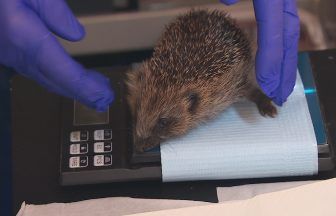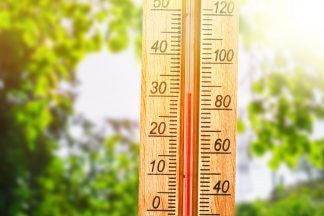This week Scotland has experienced something known as a Foehn wind, which is actually quite common in this country thanks to our mountains.
It usually only gets noticed when it boosts temperatures way above usual for the time of year – as it did just a few days ago.
On Sunday, the mercury hit 19.9C in the tiny hamlet of Achfary in the north Highlands and 19.6C in Kinlochewe, which believe it or not is what we’d normally expect in July or August here.
Achfary also became home to the new December UK temperature record when it hit 18.7C just a few days after Christmas in 2019.
But what is causing this, and should we all be packing our bags and heading to Achfary which is quickly becoming a new hot spot in the UK?
The quick answer, no.
Achfary will likely only ever be a UK top spot in the winter down to the Foehn effect. While foehn winds are sometimes present in the summer, it’s unlikely they would ever be significant enough to beat the high values seen further south at that time of year.
The north Highlands became the top spot earlier in the week as warm moist air moved into the UK from the south. This moisture laden air would have then oscillated up and down across the mountains of northern Scotland with the temperature rising and falling as it did so.
The Foehn develops as moist winds run up the windward side of mountains, where clouds and rainfall will usually develop. As the rain falls the air starts to dry out and descends on the other side of the mountains as a much drier wind that quickly warms.

Air cools as it rises and warms as it falls, but a dry air flow can warm much quicker and that’s why Foehn winds can really boost glen and valley temperatures in the right conditions.
Achfary is nestled on the banks of a loch with several large mountains to the south, and it’s these mountains that would have dried the air out and warmed it significantly before reaching the hamlet.
Warm Foehn winds are more common in Moray and Aberdeenshire in a west to south westerly wind, but as in the case this week, it can occasionally occur in the north Highlands in a southerly air flow.
In a rare easterly air flow, the warming winds can be felt along the west coast of Argyll and the Highlands – this happened during the Beast from the East.
The Foehn may develop again on Friday in Scotland with rain in the west of the country while the sun shines in Aberdeenshire with temperatures here reaching the mid-teens.
This is not unique to Scotland but can occur anywhere there are mountains, such as in Norway, Switzerland or North America.
In North America it is known as a Chinook wind and is referred to as the “snow eater” because when this warm wind comes off the mountains of Canada or the US it can clear vast amounts of snow from the Canadian Prairies and Great Plains in just days.
Follow STV News on WhatsApp
Scan the QR code on your mobile device for all the latest news from around the country























